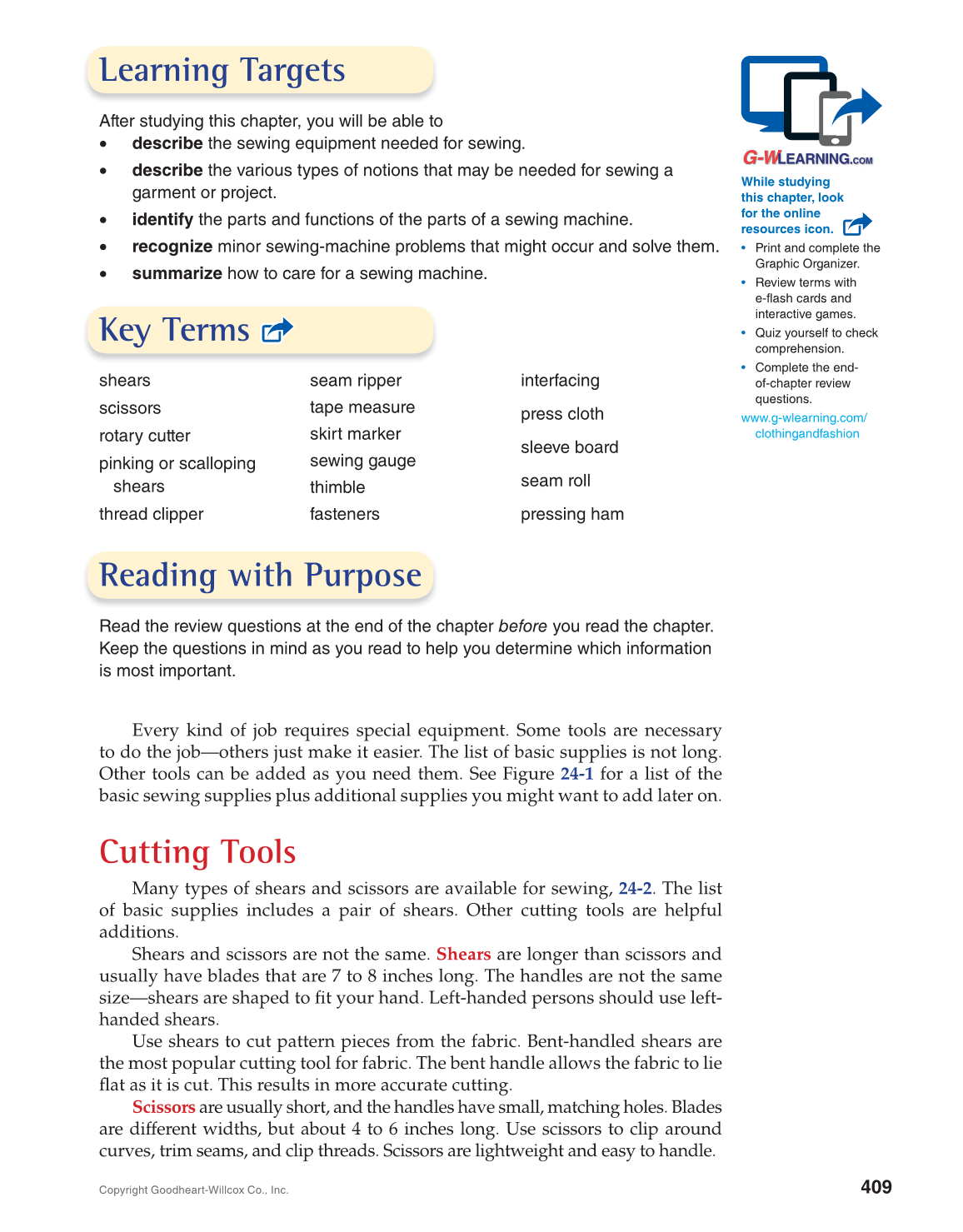409
While studying
this chapter, look
for the online
resources icon.
• Print and complete the
Graphic Organizer.
• Review terms with
e-flash cards and
interactive games.
• Quiz yourself to check
comprehension.
• Complete the end-
of-chapter review
questions.
www.g-wlearning.com/
clothingandfashion
Copyright Goodheart-Willcox Co., Inc.
Learning Targets
After studying this chapter, you will be able to
• describe the sewing equipment needed for sewing.
• describe the various types of notions that may be needed for sewing a
garment or project.
• identify the parts and functions of the parts of a sewing machine.
• recognize minor sewing-machine problems that might occur and solve them.
• summarize how to care for a sewing machine.
Key Terms
shears
scissors
rotary cutter
pinking or scalloping
shears
thread clipper
seam ripper
tape measure
skirt marker
sewing gauge
thimble
fasteners
interfacing
press cloth
sleeve board
seam roll
pressing ham
Reading with Purpose
Read the review questions at the end of the chapter before you read the chapter.
Keep the questions in mind as you read to help you determine which information
is most important.
Every kind of job requires special equipment. Some tools are necessary
to do the job—others just make it easier. The list of basic supplies is not long.
Other tools can be added as you need them. See Figure 24-1 for a list of the
basic sewing supplies plus additional supplies you might want to add later on.
Cutting Tools
Many types of shears and scissors are available for sewing, 24-2. The list
of basic supplies includes a pair of shears. Other cutting tools are helpful
additions.
Shears and scissors are not the same. Shears are longer than scissors and
usually have blades that are 7 to 8 inches long. The handles are not the same
size—shears are shaped to fi t your hand. Left-handed persons should use left-
handed shears.
Use shears to cut pattern pieces from the fabric. Bent-handled shears are
the most popular cutting tool for fabric. The bent handle allows the fabric to lie
fl at as it is cut. This results in more accurate cutting.
Scissors are usually short, and the handles have small, matching holes. Blades
are different widths, but about 4 to 6 inches long. Use scissors to clip around
curves, trim seams, and clip threads. Scissors are lightweight and easy to handle.
